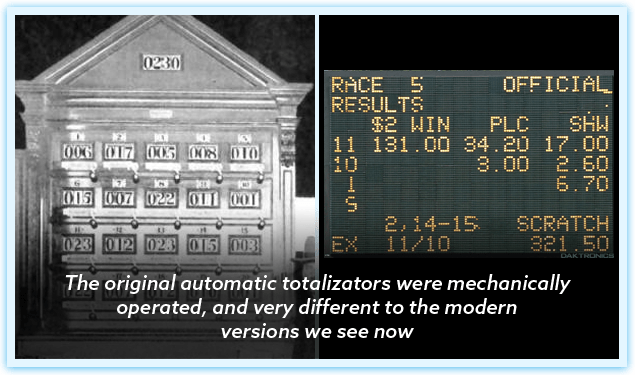Guide to Pari-Mutuel Betting

Pari-mutuel betting, also known as pool betting, is a unique form of betting. Instead of placing wagers against a bookmaker, you’re placing wagers against other bettors who have placed wagers on the same event. All wagers go into a pool, and the pool is shared equally between those who make the winning selection. As might be expected, a small percentage of all total wagers is deducted by the “house.” When it comes to pari-mutuel betting, the house is typically a state run organization or a private company that provides pari-mutuel betting services.
Unlike some other forms of sports betting, pari-mutuel wagering is fully legal in almost every region around the world. It’s traditionally associated with horse racing and greyhound racing, but it can be used on any sports event in which the participants finish in a ranked order. For example, this is the most popular form of betting when in comes to jai alai, a sport that vaguely resembles squash and racquetball.
It’s difficult to apply any betting strategy when placing pari-mutuel wagers, as you don’t get fixed odds. Payouts depend on two factors: how many people placed a wager on an event, and how many people picked the winner. Payouts are officially calculated after the betting has closed (i.e. once the event has started or is about to start). As you can see, determining whether or not a selection offers any value can be very challenging.
Nonetheless, pari-mutuel betting is very popular among recreational bettors and professional gamblers alike. For many people around the world it’s the only form of legalized sports betting that’s available to them.
In this short guide to pari-mutuel betting we explain exactly how it works, and detail some of the different pari-mutuel wagers that are typically available. We also take a brief look at its history and how this form of betting is used in various countries around the world.
If you’re looking to get involved, several of the top online gambling sites offer pari-mutuel betting.
How We Rate

Safety & Security
You should be able to gamble online without fear. So we only recommend licensed sites that use the latest security and encryption techniques.

Bonuses
Maximize your bankroll with fantastic bonuses. Our recommended sites offer valuable bonuses with fair terms and conditions, including manageable wagering requirements.

Games & Betting
The best sites have the best wagering options. That’s why you will find extensive games and betting opportunities on our recommended sites.

Banking
Getting your money to and from your account shouldn’t be a hassle. We only recommend sites with a variety of convenient banking methods, including cryptocurrency and e-wallets.
How Pari-Mutuel Betting Works
The basic concept behind pari-mutuel is reasonably straightforward. You make your selections for a sports event in the same way as you do for traditional sports betting, but you aren’t offered fixed odds when you put your money down. You’ll be offered “probable odds” based on the breakdown of the betting pool at the time. Be aware that these odds are subject to change, which you’ll be able to plainly see in the example we provide later on.
Every pari-mutuel wager placed on a betting market goes into a specific pool for that market. When the relevant event is finished, the total amount of wagers is added up. The house takes a small cut/commission off the top, and then divides what’s left between the bettors who made the correct selection. They are paid out based on how much they wagered.

This sounds more complicated than it actually is. It will become a lot clearer if we use an example to demonstrate. For the purposes of this example, we’ll assume we’re wagering on a horse race with just five runners. We decide to back horse number one for $10, and horse number three for $10. The house takes in the following wagers on the race.
- Horse #1 – $200
- Horse #2 – $400
- Horse #3 – $100
- Horse #4 – $200
- Horse #5 – $300
These wagers total $1,200. Please note that we’ve used small numbers here to make this example easier to follow. In reality, there’d be a LOT more money in the betting pool.
First, the house takes its cut of 10% for $120. This leaves $1,080 in the betting pool. The potential payouts for each horse are then calculated by dividing the remaining pool by the amount wagered on that horse. Feel free to look over the potential payouts list below.
- Horse #1 – $5.40
- Horse #2 – $2.70
- Horse #3 – $10.80
- Horse #4 – $5.40
- Horse #5 – $3.60
We’ll now explain how you can use this information. Since the potential payout for horse number two is $2.70, this means anyone wagering on horse number two could win $2.70 for every $1 wagered. This includes their initial stake. If horse number one won the race, we’d receive a total of $54 for our $10 wager. If horse number three won the race, we’d receive a total of $108 for our $10 wager.
As you can see, the potential payouts are all different. The total amount paid out will always be the same, but the amount per $1 wagered changes based on the total amount wagered on each selection. The more that was wagered, the smaller the payout per $1. This can be compared to fixed odds betting, where the odds for the favorite (and therefore the potential payout) are the lowest, and the odds for the outsiders are the highest. Although the odds aren’t fixed here, there will typically be more money coming in for the favorite than there will be for the outsiders.
The big difference, as we’ve mentioned, is that we don’t know for sure what our potential payouts will be when we actually place our wagers. As we mentioned earlier, pari-mutuel betting operators show the PROBABLE odds prior to the relevant event starting. Although these are described as probable, there’s no guarantee that the eventual payout will be anywhere close. It all depends on how much money has been taken in on the different selections at the time we place our wager.
For example, let’s say we had placed our $10 wagers on horses one and three long before the race started. The betting pool at the time was broken down as follows.
- Horse #1 – $50
- Horse #2 – $200
- Horse #3 – $20
- Horse #4 – $150
- Horse #5 – $80
At this point there would have been $500 in the pool, leaving $450 after the 10% commission. The probable odds we’d have seen for horse number 1 were $9 per $1 wager ($450/$50). And for horse number three they were $22.50 per $1 wager ($450/$20). This is obviously not what ended up happening. When we originally placed our wagers, no one knew how much money was going to come in for the various selections, which is why these numbers don’t match up.
This highlights how difficult it is to make money with pari-mutuel betting. An essential part of any sports betting strategy is to identify the value in the betting markets. We do this by determining the likely probability of a wager winning, and comparing that probability to the relevant odds. When the probability of winning is greater than the odds suggest, we’ve identified value.
With pari-mutuel betting, it’s impossible to know for sure whether there’s any value or not. The probable odds at the time of placing our wagers are subject to change, and as we’ve just demonstrated they can change drastically. So what seems like a value wager at the time of putting our money down can actually end up being a very bad wager.
That’s why it’s very hard for us to support pari-mutuel betting. While we realize that it’s popular, even among professional gamblers, we don’t prefer to expose ourselves to that much uncertainty. One positive about this form of betting that we can point out, though, is the wide range of different wagers available.
Types of Pari-Mutuel Wagers
In the example we provided above, we used a simple “win” wager. This is the most common pari-mutuel wager, but there are other types too. Each of these works in the same way in terms of how the potential payouts are calculated, but they are based on different outcomes.
Here are some examples.
-
- Place Wager
The terms of this wager will vary depending on where in the world you live. In North America, a place wager is on a selection to finish either first or second. In other parts of the world it’s a wager on a selection to finish anywhere in “the places.” How many places count towards this wager depends solely on how many participants there are.
- Show Wager
This wager is specific to North America. It’s a wager on a selection to finish first, second or third.
- Across the board
This is a combination wager, available in North America. It’s effectively three different wagers – a wager, a place wager and a show wager. If the relevant selection finishes first, then all three wagers win. If it finishes second, then just the place and the show wagers win. If it finishes third, only the show wager wins.
- Each way
This is another combination wager, typically available in most regions outside North America. It combines a win wager with a place wager.
- Exacta
A wager on two selections to finish first and second, in the correct order.
- Any2/Duet
A wager on two selections to finish anywhere in the top three places.
- Trifecta
A wager on three selections to finish first, second and third, in the correct order.
These are just some of the many options available. These wagers can be extremely difficult to get right, but they tend to over very attractive payouts. This is what makes them so appealing and perfect for recreational bettors.
History of Pari-Mutuel Betting
Pari-mutuel betting was invented by Joseph Oller back in 1867. He was a Spanish entrepreneur who spend most of his life in Paris, France. The name pari-mutuel originates from the French phrase “pari mutual,” which means “mutual betting.” After becoming frustrated with the bookmakers for making such large profits off of innocent bettors, it’s believed that Oller came up with an ingenious idea to solve this problem. Hence, pari-mutuel betting was born.
Oller was able to implement this form of wagering at several horse racing tracks throughout France. Things were going great until 1874, when he got accused of operating illegal gambling and sentenced to spend some time in prison. Despite that setback, by 1891, pari-mutuel wagering was fully legalized in France and fixed odds betting was finally banned. Oller had accomplished what he set out to do.
Following that move, pari-mutuel betting started to spread to other parts of the world. Australia, New Zealand, the United States and the United Kingdom all embraced this form of wagering on the grounds that it was “fairer.” In an interesting change of direction, Oller went on to open the now famous Moulin Rouge.
The biggest problem with pari-mutuel wagering was all the calculations that were required. They were initially done manually, which took a lot of time. This problem was solved by Australian engineer George Julius, who invented the automatic totalizator. He originally developed this as a mechanical vote-counting machine, but he was rejected by the government when he took his prototype to them. He then adapted his machine for the purposes of pari-mutuel wagering.

Historically, virtually all pari-mutuel betting operators around the world were state owned and not-for-profit. Any profits that were made either went directly to the government or, more typically, invested into horse racing. In recent years, many operations are now privately owned and run commercially.
Pari-Mutuel Betting Around the World
As we’ve mentioned, pari-mutuel betting is legalized in most parts of the world. This is even true in the United States, and other parts of the world where the legality of sports betting is less than clear. Below is some information on pari-mutuel betting in the regions where it is most popular, including details of the organizations that provide pari-mutuel betting services.
 United States
United StatesPari-mutuel betting is available at all horse and greyhound racing tracks throughout the US. On track betting is completely legal and fully regulated. Some states even offer off track betting shops/bureaus (OTBs) where pari-mutuel betting is also legal. In addition to that, there are several online betting sites that offer pari-mutuel betting. Be careful though, as these sites aren’t legal in every state.
Check out our recommended US horse racing sites for the best options.
Florida is the only state in the country to offer pari-mutuel betting on jai alai.
 Canada
CanadaPari-mutuel betting is available at all Canadian horse racing tracks. Bettors can also place wagers at licensed “theatre betting” sites, or via telephone betting services. All pari-mutuel betting activity is governed and regulated by the Canadian Pari-Mutuel Agency, which falls under the supervision of the government department of Agriculture and Agri-Food.
 United Kingdom
United KingdomThe Tote is the premier pari-mutuel betting organization in the United Kingdom. It was formed by the British Government in 1928, as the Horserace Totalisator Board. It’s the only organization in the UK that’s allowed to offer pari-mutuel betting on British horse racing.
In 2011 the Tote was sold by the state to gambling operator BetFred. It is now run as a commercial organization, offering fixed odds betting in addition to its traditional services.
 Tote Ireland
Tote IrelandTote Ireland is essentially the Irish equivalent of the British Tote. It operates in pretty much the same way, although it ONLY offers pari-mutuel betting. They don’t offer fixed odds betting at all. Irish horse racing is the main focus, but it’s possible to wager on international horse racing too. Greyhound racing is also covered, along with soccer pools.
Horse Racing Ireland owns and operates this organization, and all of their proceeds are invested back into Irish horse racing.
 Australia & New Zealand
Australia & New ZealandPari-mutuel betting in Australia & New Zealand was traditionally operated exclusively by Totalisator Agency Boards (TABs). Each state had only one TAB, which was government owed and had a complete monopoly. Things have since changed. Most of these TABs are now privatized, and many are owned by Tabcorp. The New Zealand TAB was reformed as the New Zealand Racing Board, under the terms of the Racing Act 2003.
 France
FrancePari-mutuel betting is extremely popular in France. You might be surprised to discover that it’s the only form of betting allowed at most horse racing tracks, since they don’t have traditional on course bookmakers there. The Pari Mutuel Urbain (PMU) is the organization responsible for operating all the pari-mutuel betting outlets throughout the region. It’s the largest pari-mutuel operator in Europe, and the second largest in the world.
 Hong Kong
Hong KongThe Hong Kong Jockey Club has been granted the monopoly on pari-mutuel horse racing betting by the government. Founded in 1884, it operates as a not-for-profit organization and is also responsible for licensing and regulating horse racing. The Hong Kong Jockey Club owns two racetracks: Sha Tin and Happy Valley. They typically organize around 700 horse races each year, so those who live there will have plenty of opportunities to place wagers.
 75%
75% 80%
80%
